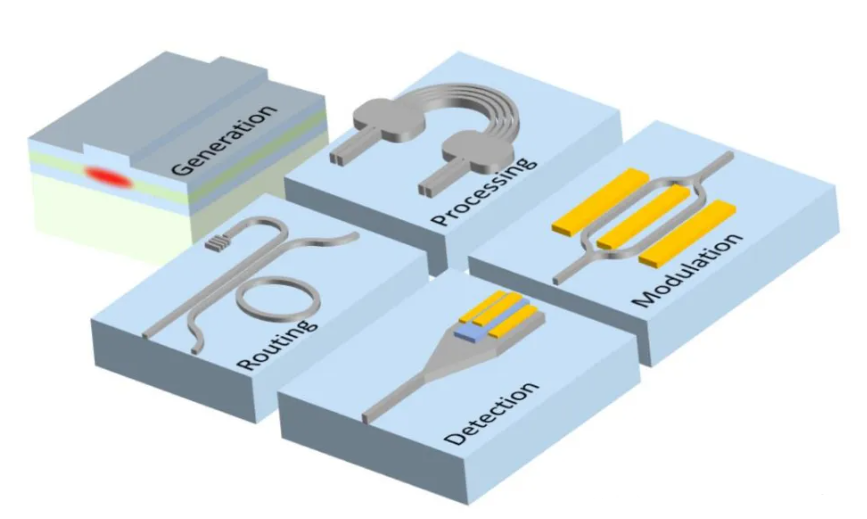The composition of optical communication devices
The communication system with the light wave as the signal and the Optical fiber as the transmission medium is called the Optical fiber communications system. The advantages of optical fiber communication compared with traditional cable communication and wireless communication are: large communication capacity, low transmission loss, strong anti-electromagnetic interference ability, strong confidentiality, and the raw material of optical fiber transmission medium is silicon dioxide with abundant storage. In addition, optical fiber has the advantages of small size, light weight and low cost compared with cable.
The following diagram shows the components of a simple photonic integrated circuit: laser, optical reuse and demultiplexing device, photodetector and modulator.

The basic structure of optical fiber bidirectional communication system includes: electric transmitter, optical transmitter, transmission fiber, optical receiver and electrical receiver.
The high-speed electrical signal is encoded by the electric transmitter to the optical transmitter, converted into optical signals by electro-optical devices such as Laser device (LD), and then coupled to the transmission fiber.
After long distance transmission of optical signal through single-mode fiber, erbium-doped fiber amplifier can be used to amplify the optical signal and continue transmission. After the optical receiving end, the optical signal is converted into an electrical signal by PD and other devices, and the signal is received by the electrical receiver through subsequent electrical processing. The process of sending and receiving signals in the opposite direction is the same.
In order to achieve the standardization of equipment in the link, the optical transmitter and the optical receiver in the same location are gradually integrated into an optical Transceiver.
The high-speed Optical transceiver module is composed of the Receiver Optical Subassembly (ROSA; Transmitter Optical Subassembly (TOSA) represented by active optical devices, passive devices, functional circuits and photoelectric interface components are packaged. ROSA and TOSA are packaged by lasers, photodetectors, etc. in the form of optical chips.
In the face of the physical bottleneck and technical challenges encountered in the development of microelectronics technology, people began to use photons as information carriers to achieve greater bandwidth, higher speed, lower power consumption, and lower delay photonic inteated circuit (PIC). An important goal of photonic integrated loop is to realize the integration of functions of light generation, coupling, modulation, filtering, transmission, detection and so on. The initial driving force of photonic integrated circuits comes from data communication, and then it has been greatly developed in microwave photonics, quantum information processing, nonlinear optics, sensors, lidar and other fields.
Post time: Aug-20-2024





